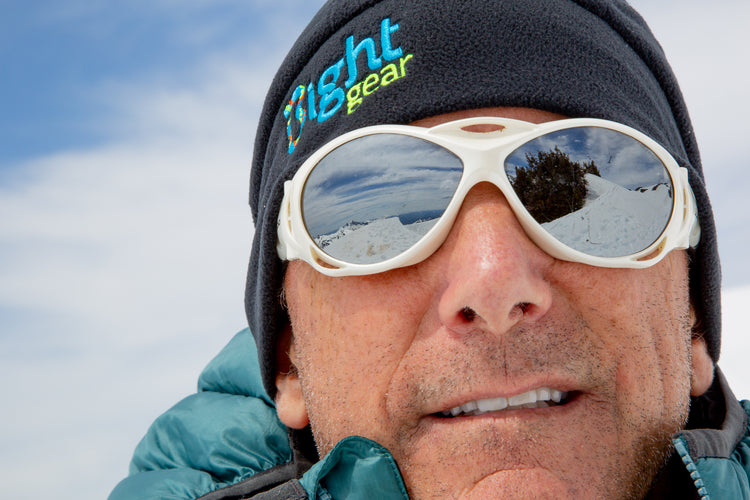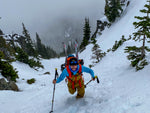To say eyes are important would be a bit of an understatement; for most of us, they’re the sensory organ we rely on above all else, and that holds true in the mountains too. Whether you’re assessing a hanging hazard above you or taking in a sunrise, our optical organs are a key component of climbing, and should be protected against sun, wind, and whatever else may come your way.
Glacier Glasses vs Sun Glasses: What’s the Difference
Protecting your eyes may seem like a pretty intuitive concept, but we see a lot of folks who think that regular sunglasses will do the trick. While regular sunglasses are definitely better than nothing, their coverage (the amount of eye area they block from direct sunlight) can be seriously lacking. Glacier glasses, on the other hand, are designed to block sunlight reflecting off the snow and alpine terrain that may be making its way into the bottoms and sides of your eyes. Blocking the sun bouncing off the snow is a weird concept (people don’t usually think to put sunscreen on the bottom of their noses and chins) but is just as important as blocking the UV rays coming down from above.
Glacier Glasses: What to Look For
There are a few key components to keep an eye out for when considering glacier glasses.
Grip
The last thing you want is for your glasses to slip off your nose and into that crevasse you’re crossing, so a rubberized grip at the temples and nose is super important. Additionally, you can see if the glasses come with a temple strap or croakies to make extra sure you don’t lose em.
Coverage
As we talked about before, coverage is super important. Make sure your glasses have a high frame height and a lot of side wrap, covering as much of your eye as possible. Many glacier glasses have removable side panels, so you can wear them both on and off the mountain without looking like too much of a dork.
Fit
This is a bit more subjective, but fit and comfort are also key. You’ll be wearing glacier glasses pretty much the entire time you’re traveling on snow, so having a snug but not overly tight fit will be important in avoiding pressure-induced headaches.
Lens Technology
While there are a ton of different lens technologies out there, they all strive to do one main thing; keep the sun out of your eyes while not impacting your vision. Typically, you’ll want to look for lenses with a “category 3” or “category 4” darkness rating, which is usually specified in the name of the lens. In addition to a solid darkness rating, there are a ton of extra technology add-ons, with technology like mirror finishes, transition lenses, polarization, anti-reflective coatings, and anti-fog coatings all claiming to be the end all be all of lens tech. While all of these will definitely improve your experience, transition lenses and polarized lenses are the main features to look for.
Transition Lenses
Transition lenses increase/decrease the amount of light allowed to reach your eye automatically, which can make them super helpful on a day with variable conditions. As clouds or weather systems move across the sun, transition lenses will adjust automatically, making for one less thing you need to worry about. Transition lenses are usually brown or gray.
Polarized Lenses
Polarized lenses are great at cutting out glare, and will help on those super sunny days when the snow reflection can literally be blinding. They can be especially helpful at high elevations where UV rays are strongest.
Check out our Guide Pick Glacier Glasses here.
Goggles: Not Just for Skiing
While glacier glasses will suffice during most clear-weather days, goggles can come in super handy as soon as the wind picks up or precip starts rolling in. During alpine starts in windy conditions, clear lens goggles can be the difference between enjoying the stars and having a ton of grit and debris in your eyes, especially if you wear contacts.
Goggles: What to Look For
Frames
Goggle frames are much less important than glacier glasses since the strap will be doing most of the work holding them in place. However, it’s important to choose goggles that fit well, so staying away from some of the bug-eyed frames popular with skiers and snowboards is a good move. If you wear glasses, be sure to pick an Over-The-Glasses (OTG) frame, like the Smith Knoweldge.
Lenses
For the most part, the same advice about glacier glasses lenses applies to goggles. The additional thing to look for with goggles are lens options; you should be able to quickly switch between clear and dark lenses, for night vs daytime climbing. For night climbing, lenses should be completely clear, no yellow or orange tint.
Check out our Guide Pick Goggles here


